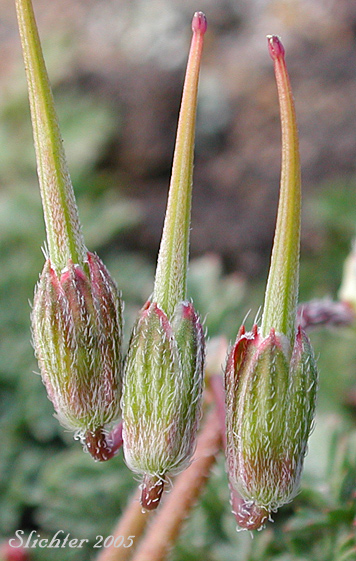 The photo at right shows the long, tapered fruits of redstem filaree, which give it another common name of stork's-bill.
The photo at right shows the long, tapered fruits of redstem filaree, which give it another common name of stork's-bill.Filaree is an annual flower which is often considered a weedy species. The leaves are largely found in a basal rosette. Individual leaves are pinnately compound or pinnatifid with incised segments, the segments very narrow. A pair of small stipules with acute tips are found at the base of the long petioles. The stems rise 3-30 cm high and are often reddish with swollen nodes. Plants are pubescent throughout and sometimes very glandular.
The inflorescence is a few-flowered umbel of 2-12 flowers found on short stems from the axils of the leaves. The flowers are 10-15 mm wide and may vary slightly in size. There are 10 filaments which alternate long and short. The longer ones are topped by an anther. The styles spirally twist at maturity. The sepals are 4-7 mm long and bear an awn or bristle at their tips or a short, sharp point at their tip. The pink-purple petals are slightly longer than the sepals and narrow to a thin base which is lined by short hairs. The beak of the fruit is typically 2.5-4 cm long.
Filaree is useful as a nutritious and palatable food for livestock. It is especially prized by sheep.
Filaree is found on dry plains and grasslands, waste areas and roadsides.
A native of the old world, filaree is now established over much of the western United States.